Dendrobium orchids, also known as bamboo orchids, are fairly easy-going orchids for growing indoors (or outdoors if you live in a tropical area).
With the right amounts of light and water, they’ll reward you with sprays of colorful blossoms in pinks, purples, whites, yellows, and oranges to brighten your room.
Give them enough light, keep them watered, and their flowers will last for months.
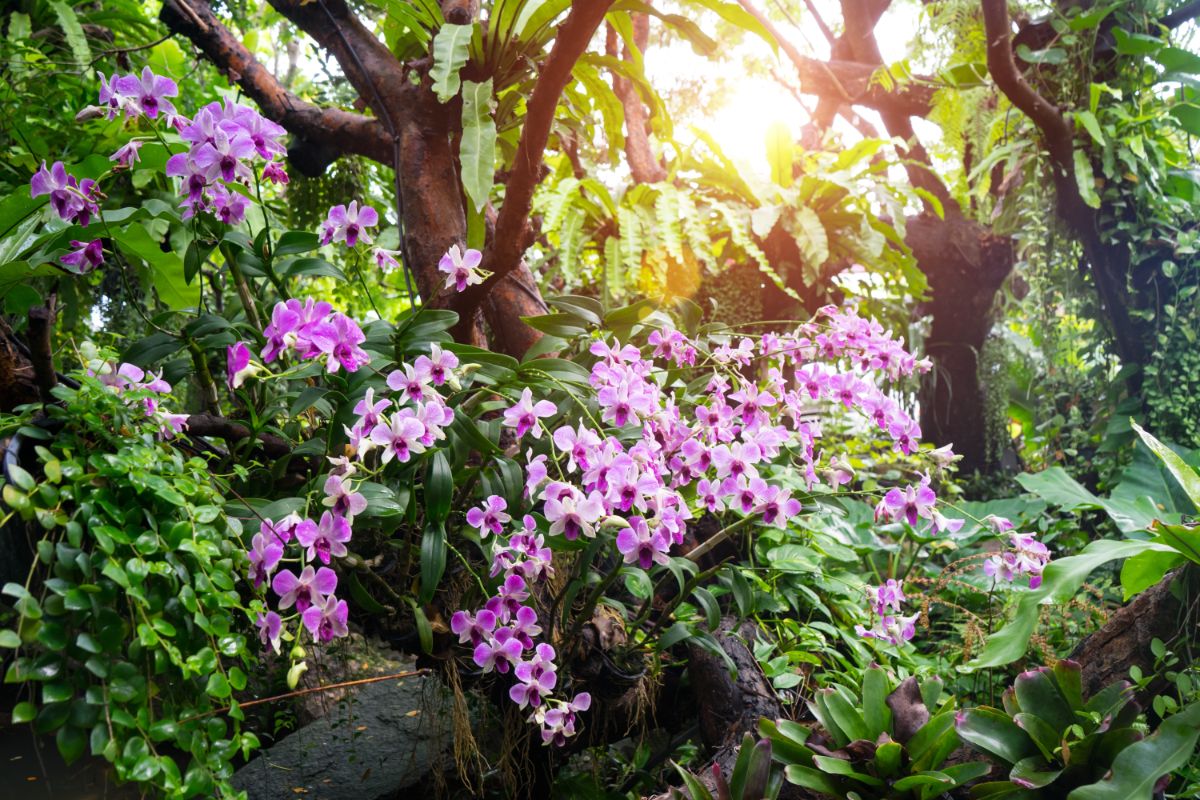
Here's everything you need to know to grow your dendrobium and keep her blooming!
Jump to:
- All About Dendrobiums
- How to Pick a Good-Quality Dendrobium
- How to Care for Dendrobiums
- Watering Dendrobiums
- How Much Light Do Dendrobium Orchids Need?
- Humidity for Orchids
- Keep Temperatures on the Warm Side
- The Best Way to Fertilize Dendrobiums
- When to Pot Dendrobiums (And When Not To)
- Should a Dendrobium Be Cut Back?
- How Can I Get a Dendrobium to Flower Again?
- Troubleshooting FAQs
- My plant looks healthy and vigorous, but a few of the flower buds are turning yellow. What’s the issue?
- My dendrobium grew a long flower spike that doesn’t seem to have any buds on it.
- The flower spike on my dendrobium developed mature buds, but they never opened. Then, they dropped off the plant. Why?
- One of my dendrobium canes lost all its leaves. Should I just cut it off?
- How do I keep the top-heavy plant from falling over all the time?
- Can I grow dendrobiums outside?
All About Dendrobiums
- This orchid species contains over a thousand diverse species, many of which have different needs in terms of sunlight, water, and nutrients.
- Most dendrobiums rise from cane-like pseudobulbs, which are basically thickened stems that store food, water, and nutrients.
- Dendrobiums are native to southeast Asia into Australia, and native species can be found from the cold mountain heights to arid deserts.
- Because they are native to the Southern Hemisphere, they’ll bloom in winter in the Northern Hemisphere.
- Many are epiphytic plants, which means they grow in treetops, not in soil. Because of this, they should be grown in orchid potting media that consists of a light mixture of bark with a little horticultural charcoal and perlite.
- The dendrobium orchids you often see in commerce in the United States are often the phalaenopsis-type dendrobiums, named because their flowers resemble the ever-popular butterfly orchids or phalaenopsis. These have flowers in all kinds of different colors.
- Some flowers are even fragrant!
How to Pick a Good-Quality Dendrobium
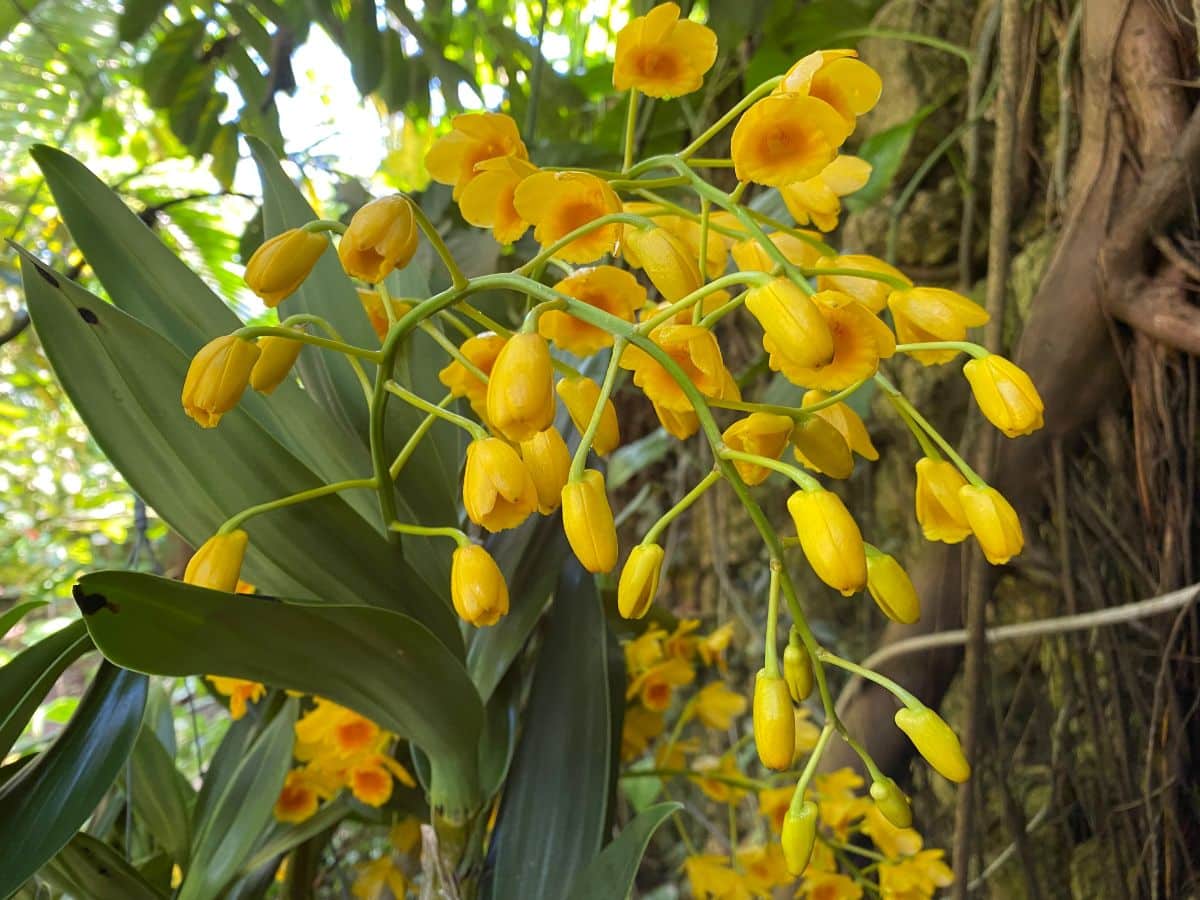
You can sometimes find a dendrobium in a big box store. They’ll look bright and cheerful if they just arrived on a new shipment – and after a couple of weeks of no water and no light, they’ll be dropping flowers and looking puny. Occasionally, they might go on sale.
A better place to find them is at a local greenhouse or a florist who specializes in orchids and other tropical plants. Online sellers are fine but check their online reviews first.
Box stores are fine if you like half-dead plants for cheap. However, nothing beats buying local and being able to talk to somebody who knows their plants and buying a healthy, gorgeous dendrobium from them.
When choosing a dendrobium, look for:
- Thick, green leaves with no hint of insect or disease damage.
- Multiple plump stems (pseudobulbs) in the pot.
- Pseudobulbs are thick and not wrinkled or withered.
- A nice big plant in a little tiny pot is ideal.
How to Care for Dendrobiums

Understanding their native habitat can help you understand the kind of care that these unique orchids require.
Watering Dendrobiums
During spring and summer, as their new leaves unfurl, dendrobiums need lots of water. The best way to water them allows them to hearken back to their life in the treetops during monsoon season. Place the pot in the sink and run tepid water through the pot, letting it drain for a minute. Don’t use salt-softened water or distilled water.
Once the growth matures in fall, ease back on the water, letting the top of the potting mix dry before watering again. The pot should not stand in water because that is bad for the roots that need air and moisture.
Generally, a big dendrobium in a tiny pot will need to be watered twice a week, especially if the temperature is high or it’s blooming.
Keep an eye on the pseudobulbs, and don’t let them shrivel. That tells you to step up the watering. If they drop a flower, they’re drying out too much between waterings!
How Much Light Do Dendrobium Orchids Need?
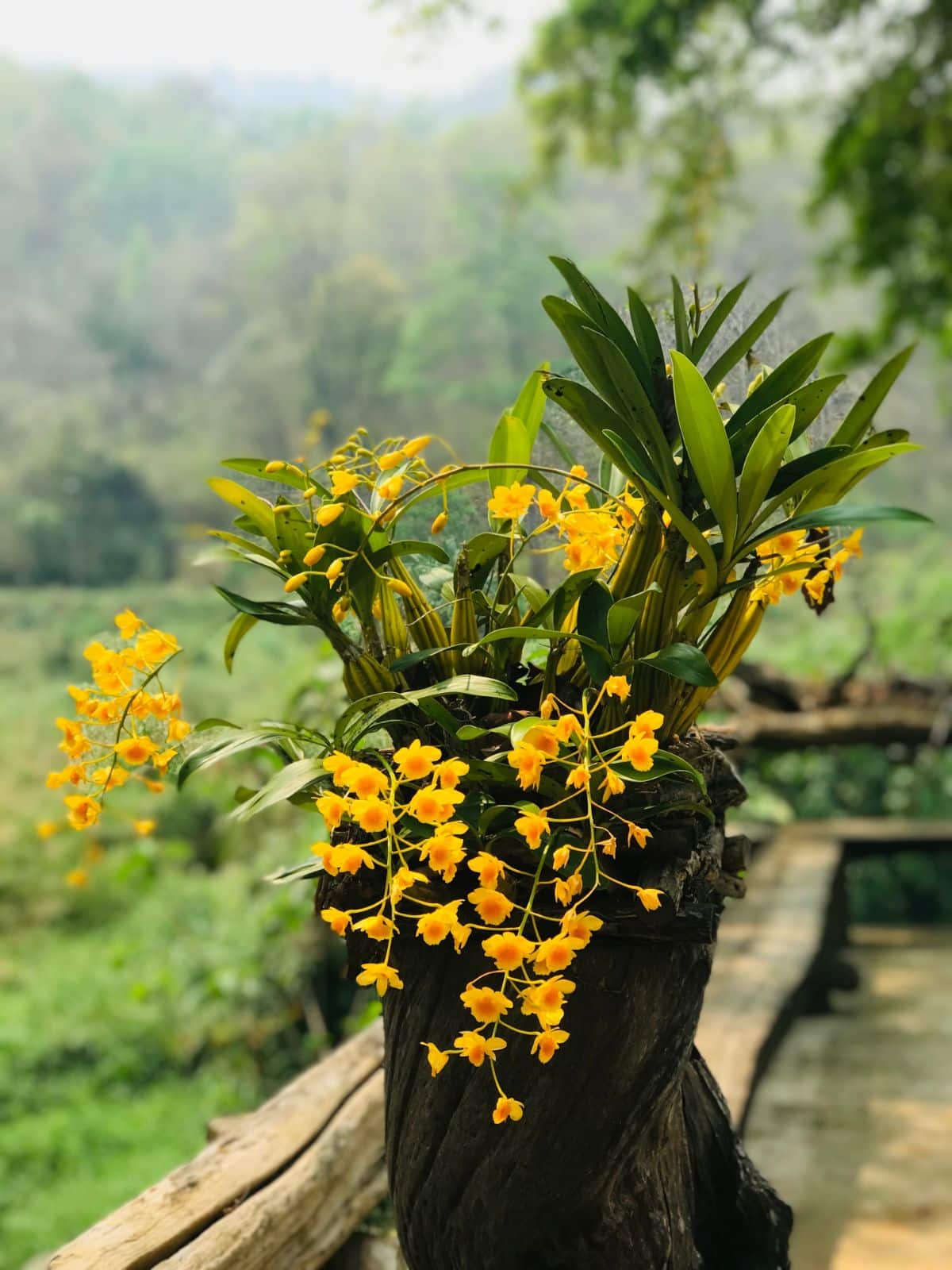
They enjoy a lot of bright light, about 2000 to 3000 footcandles’ worth, but they will get burned by sustained direct sun. (A little is fine.) If you’re growing them inside, give them the bright south window. Even then, they would love having a supplemental grow light to give them all the light they can’t get from the sun.
They can be grown in lower light, but blooms are sporadic. A simple full-spectrum LED light will bring out the flowers.
Humidity for Orchids
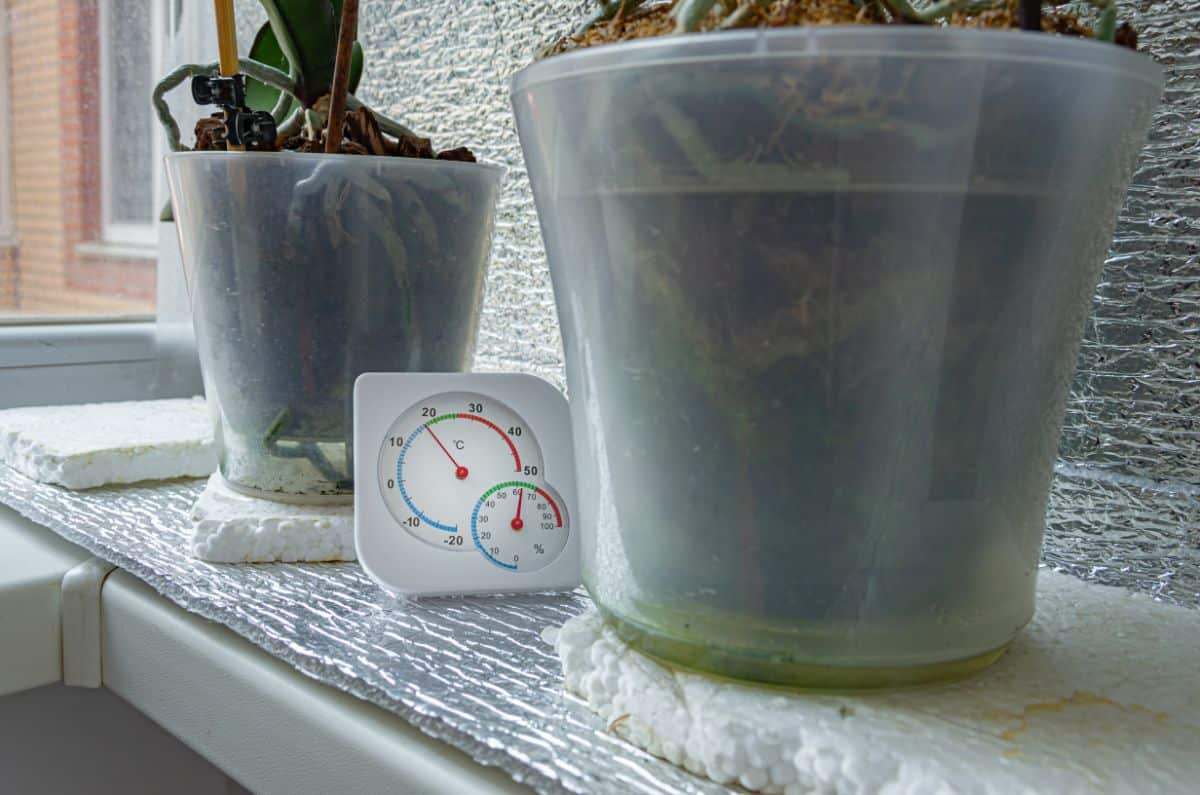
Tropical and subtropical orchids enjoy 50 to 70 percent humidity during their growing season. However, humidity this high could destroy the rest of your house, so 30 to 50 percent is a better level.
There are a few easy ways to raise the humidity for orchids:
- Growing your plants together in a group will keep the humidity high.
- Set your plants on a tray filled with pebbles, and fill the tray with water to the level of the pebbles. This allows the water to drain out of your orchid pots while adding humidity to the air.
- Use a spray bottle to mist the plants.
- Place the room humidifier near them.
- Grow them in the bathroom where they can enjoy humidity more often.
There’s a drawback to super-high humidity among plants that are crowded too closely together – this can also lead to fungal diseases. If this is the case, keep a small fan running near the orchids to keep air circulating.
Keep Temperatures on the Warm Side
Dendrobiums generally do well with daytime temperatures between 70 and 90 degrees, while night temperatures should drop (if possible) to the low 60s. If you live in a cold area, keep them away from the window to avoid leaf chill. Sudden temperature drops will also cause their buds to fall off.
The Best Way to Fertilize Dendrobiums
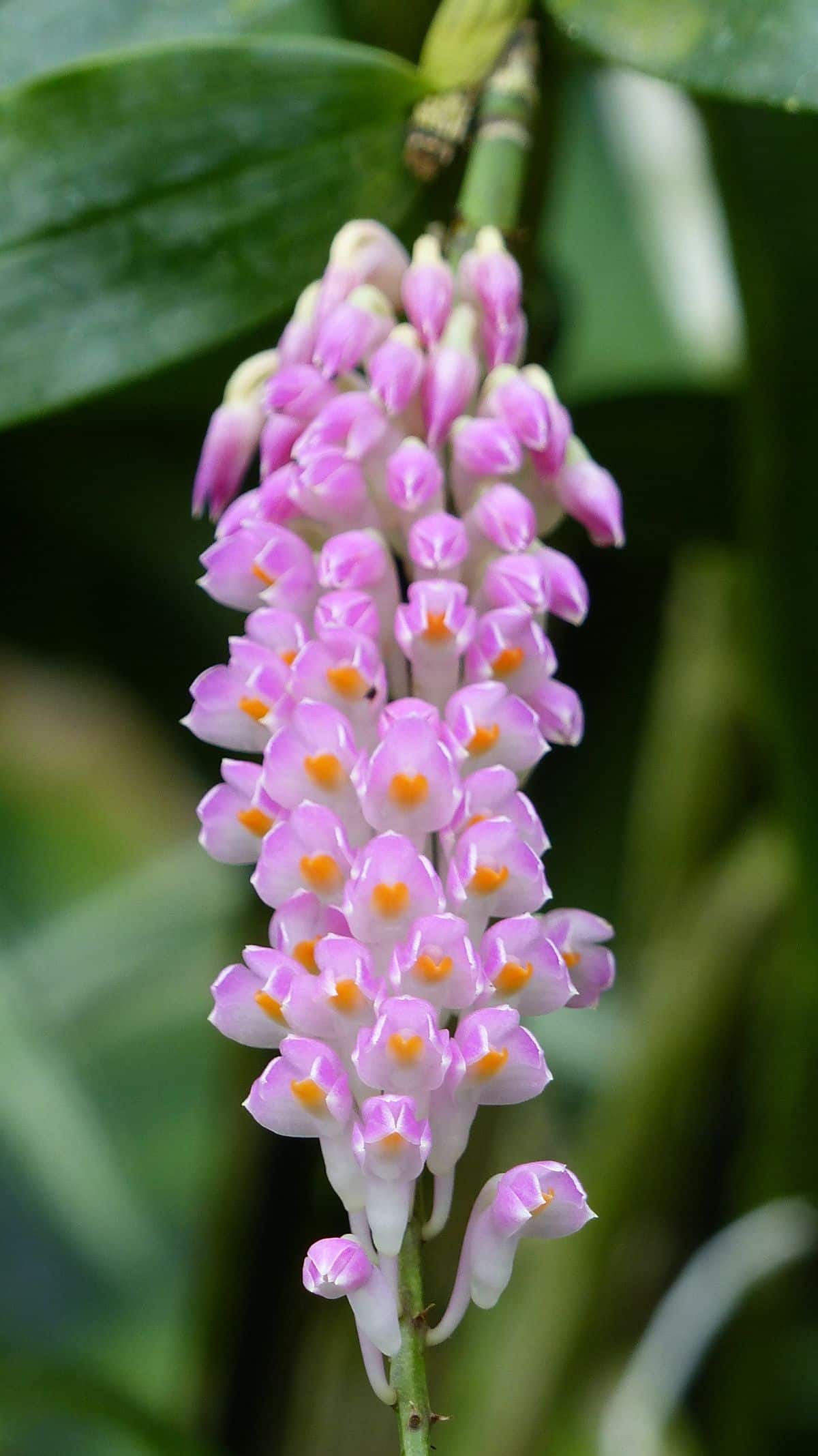
There are two schools of thought on fertilizing dendrobiums.
One states that because the orchids didn’t get much fertilizing in their native habitat, they don’t need a lot of fertilizer – can even do without it entirely. At the most, they just need a little compost, preferably from wood that’s been broken down.
The other states that dendrobiums need orchid fertilizer. “Water weekly, weakly” is a rule of thumb – that is, give them a weak dose of fertilizer (¼ strength) every week. Too much fertilizer will load the potting media with salt – which orchids are sensitive to. Every month, put the pot in the sink and let water run through it to flush out the salts.
To be honest, both schools of thought are right. Dendrobiums can do fine with being fertilized a little bit every week, and they can do fine without much of it.
Most dendrobiums are fairly carefree, to be honest. Give them enough light and water, and they should be okay. They don’t really have hard and fast rules that must be followed every single time for success. They aren’t a math equation – they’re plants.
When to Pot Dendrobiums (And When Not To)
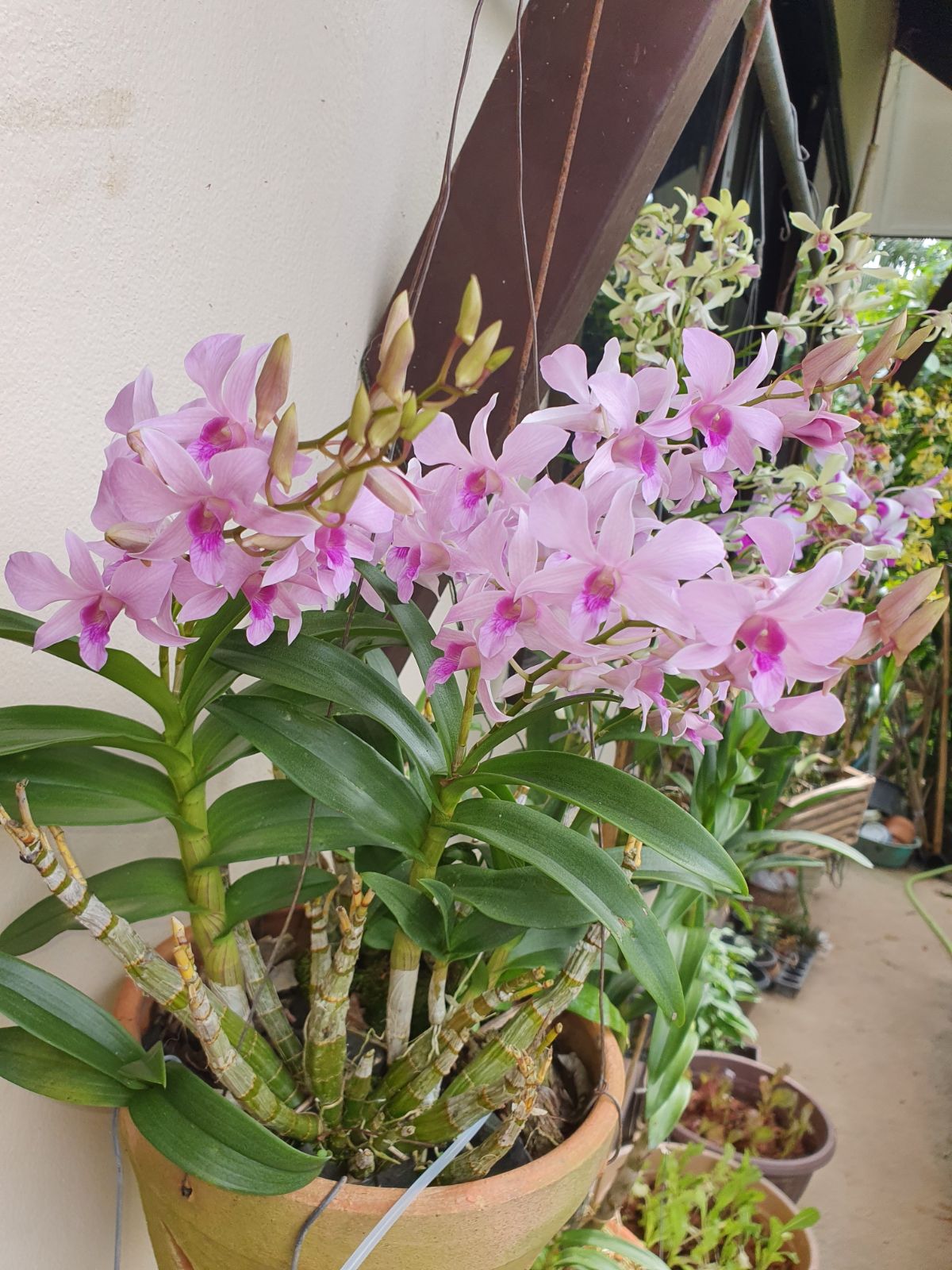
Dendrobium roots are like cats: They love to squeeze into ridiculously small pots.
So, even if you have a gigantic dendrobium with its roots in a tiny pot, don’t instantly reach for a larger pot. Just take a look at your orchid. If it is green and covering itself with cheerful flowers, then leave it in the tiny pot!
However, the orchid can get top-heavy as a result. If this is a problem, put the smaller pot into a larger clay pot and pour pea gravel under and around the smaller pot to hold it in place. Not only does this give you a nicely weighted pot, but now you can stake the flower stems by pushing the stakes into the pea gravel instead of the little tiny pot crammed full of roots.
Dendrobium orchids hate being repotted, to the point where some will dramatically croak over it. Generally, though, they’ll simply stop growing and blooming if you put them in a larger pot.
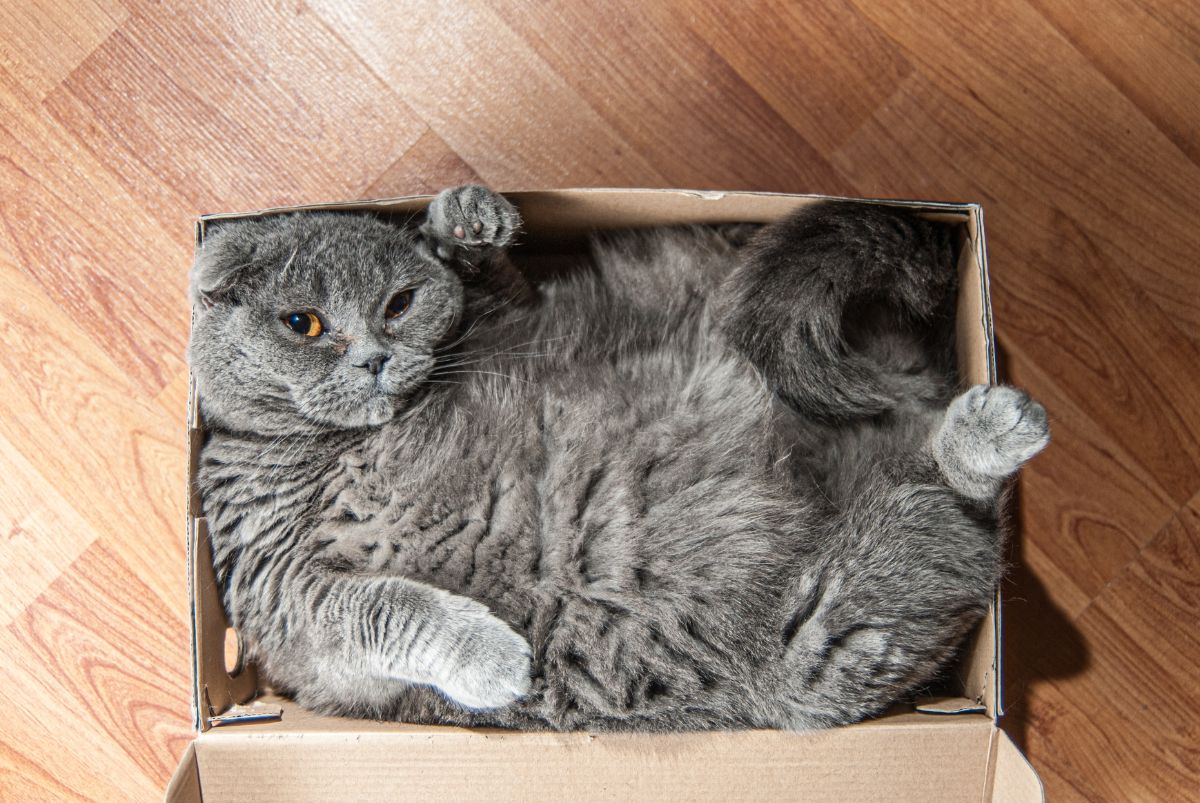
Repot them every two or three years when a brand-new baby shoot starts growing from the base of the plant. Give them fresh growing medium, and tuck the roots into a small pot that’s just big enough to hold everything. Sometimes roots will come out of the top pot, but let them.
Should a Dendrobium Be Cut Back?
When the orchid has finished blooming, the flower stalk can be cut back to where it came out of the stem (aka pseudobulb). Don’t cut back the stem itself because the next flower stem will come out of there!
How Can I Get a Dendrobium to Flower Again?
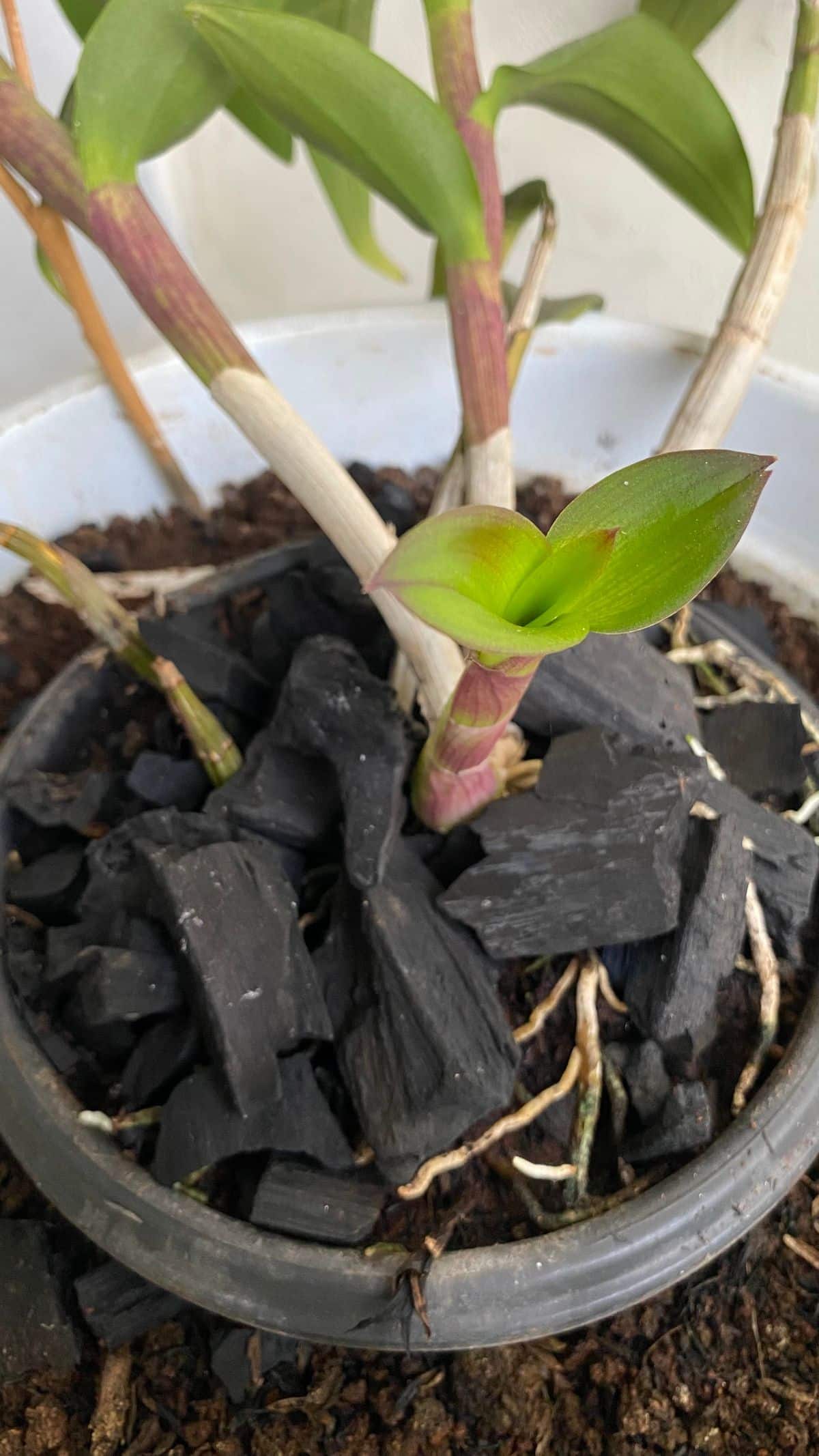
Now, this depends on a LOT of factors. The main issue is about which dendrobium you have.
The phalaenopsis-type dendrobiums that are generally seen at stores are a little more friendly, while the nobile types can be tougher to rebloom (unless you live in Australia or Hawaii).
Sometimes, reblooming can depend on local climate, temperature, water, and sunlight. Sometimes, you get lucky with a cheerful little plant that’s happy to provide spray after spray of flowers. You never know.
For best results, make sure your dendrobium has these:
- Be sure they’re in a small pot.
- In summer and fall, grow your dendrobiums outside in bright shade (no direct light.
- Leave them outside until before the first frost/freeze warning, then bring them indoors
- After they come in, keep them on the dry side. Give them only low-nitrogen fertilizer.
- Give them a full-spectrum LED grow light.
- Once the flower stalk appears, give them plenty of water and fertilizer that’s high in potassium to encourage blooms.
- Be sure they stay consistently warm with no sudden changes of temperature to avoid bud dropoff and keep the bark mix moist.
If you still don’t succeed after doing all this, just concentrate on growing them and making them big and leafy. Once the dendrobiums mature, at about 3 years, they are more inclined to start blooming on their own.
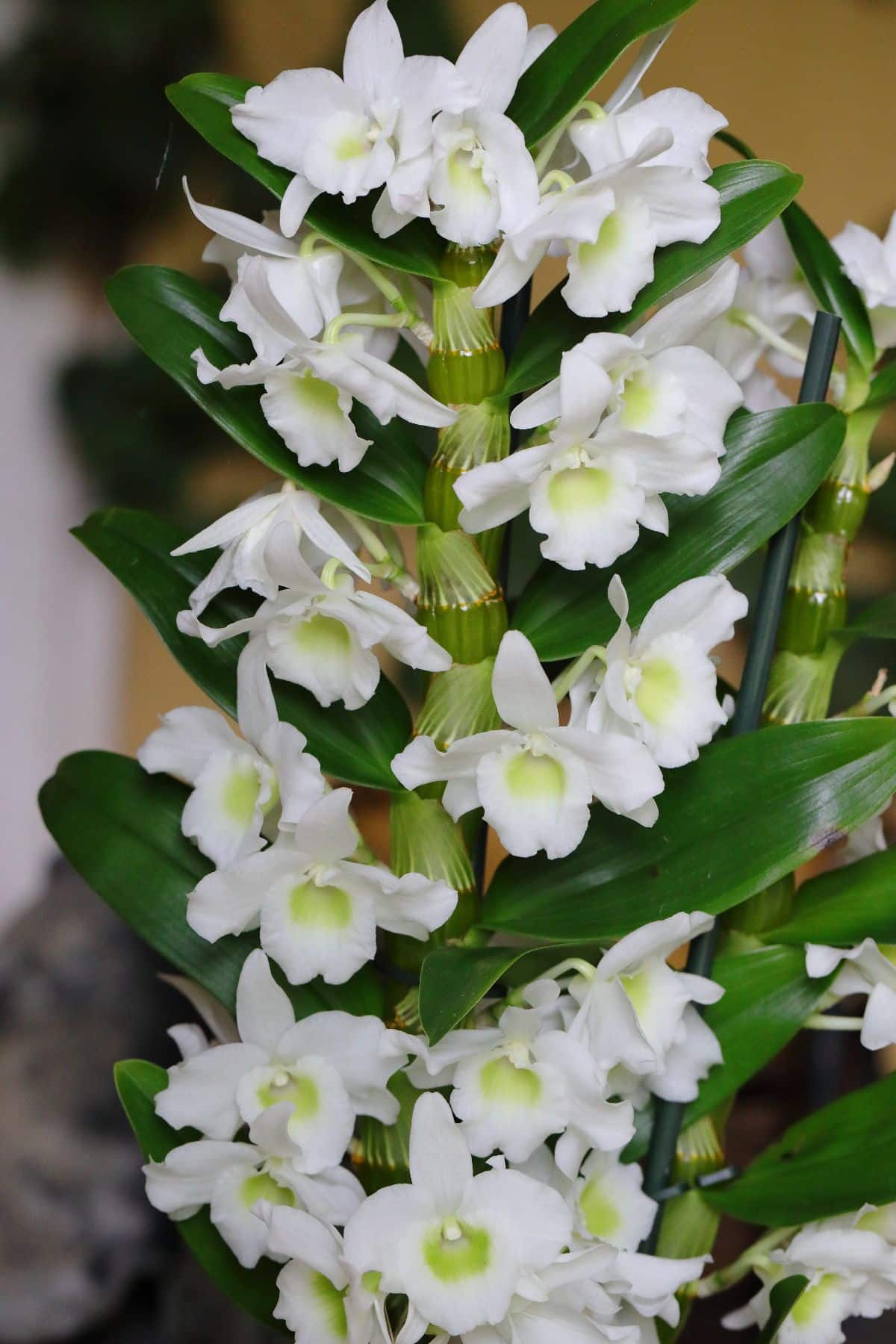
Nobile dendrobiums (Dendrobium nobile) will need a slightly different routine than the phal-type dendrobiums. Nobile types should be grown outside until the temperatures get down near freezing. Then they need a cold, dry winter to rest indoors, with little or no water for about 2 months, until the flower buds appear. At that point, give them plenty of water and give them a fertilizer high in potassium.
However, in Australia, nobile-type dendrobiums are considered beginner orchids and are grown outside as garden plants. That is part of their native habitat, after all.
Troubleshooting FAQs
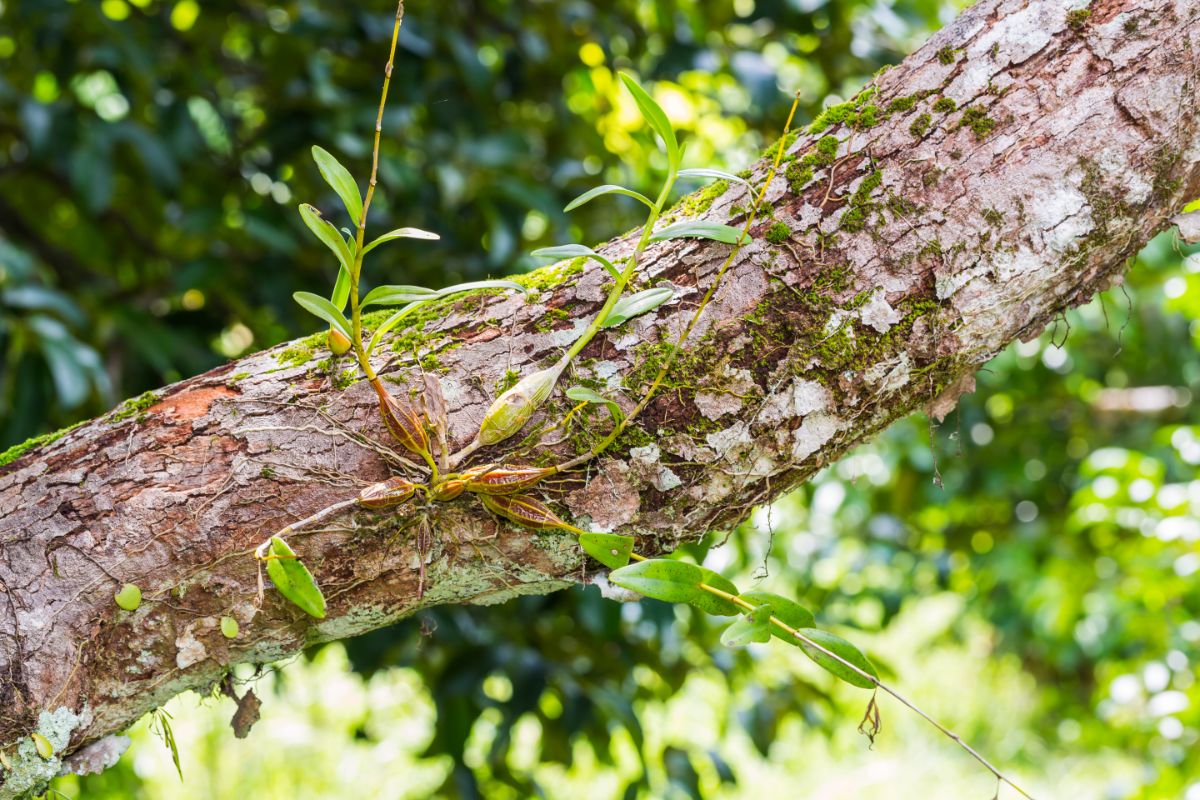
My plant looks healthy and vigorous, but a few of the flower buds are turning yellow. What’s the issue?
Often, it’s related to a temperature drop. The funny thing is that some orchids are sensitive to sudden temperature changes while others aren’t – so maybe the dendrobium gets yellow buds while the butterfly orchid next to is unbothered.
My dendrobium grew a long flower spike that doesn’t seem to have any buds on it.
Don’t panic, and don’t cut off the spike. Sometimes, orchids can take an insanely long time to flower. Have patience … or try to! Just keep watering and fertilizing it.
The flower spike on my dendrobium developed mature buds, but they never opened. Then, they dropped off the plant. Why?
This might be because you’re not giving the orchid enough water. Increase watering when they’re developing flower spikes.
Some dendrobium buds are a little sticky with nectar, and humidity can loosen the sticky bits so the flowers can open.
One way to do it is to bring your orchid into the bathroom while you’re taking a shower. Spray the flower buds a little bit, then put the plant aside. When you’re finished and shut the water off, leave the plant in the shower for an hour with the door closed.
One of my dendrobium canes lost all its leaves. Should I just cut it off?
No. Even if they don’t look good, let those scrawny-looking canes keep growing. First, its modified stem (aka pseudobulb) is holding nutrients and water that your plant needs. Second, those leafless canes will still bear gorgeous flowers.
How do I keep the top-heavy plant from falling over all the time?
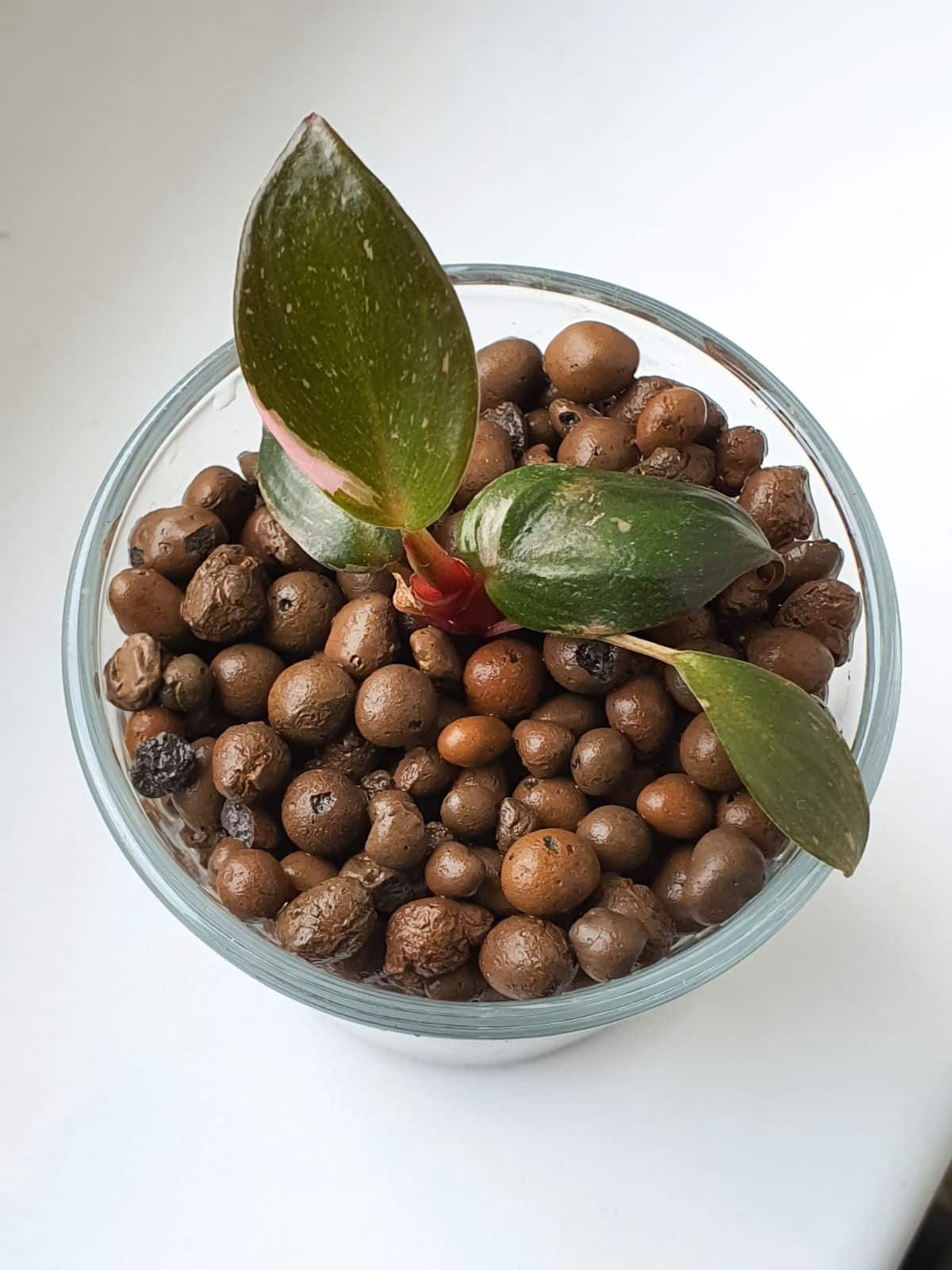
Put the little pot into a larger pot and surround it with pea gravel to hold it in place.
Or, the next time you repot the dendrobium, use leca balls for potting medium. These are made by heating clay pellets to over 2000 degrees, causing their insides to expand into a sponge-like form, something like lava rock. These are heavier and can hold the pot up a little better.
Can I grow dendrobiums outside?
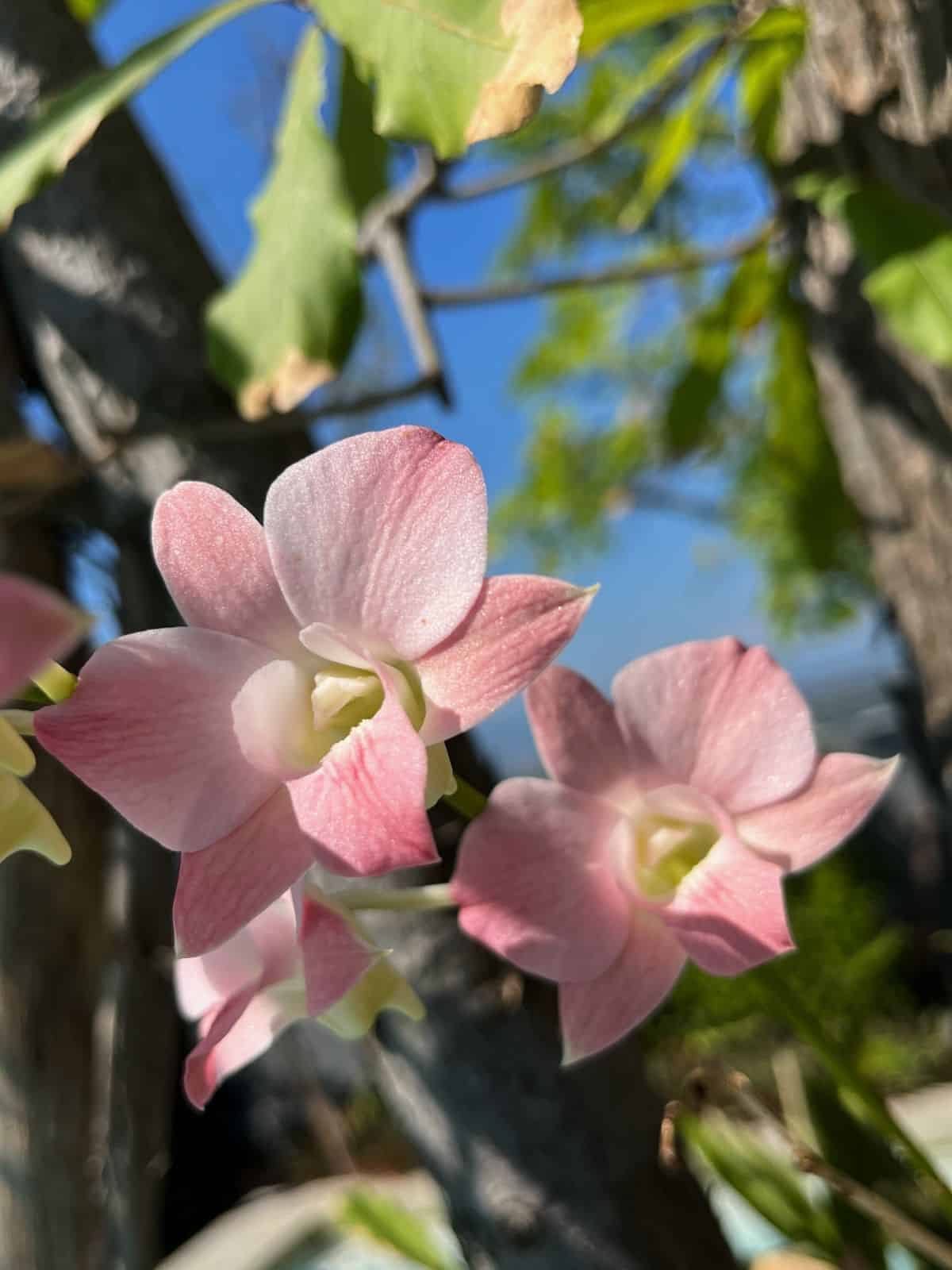
Yes, under certain conditions. If you live in a subtropical or tropical area, you should be able to leave it out all year ‘round. Otherwise, grow them outdoors only when temperatures stay above freezing, and grow them in bright shade with very little direct sunlight.

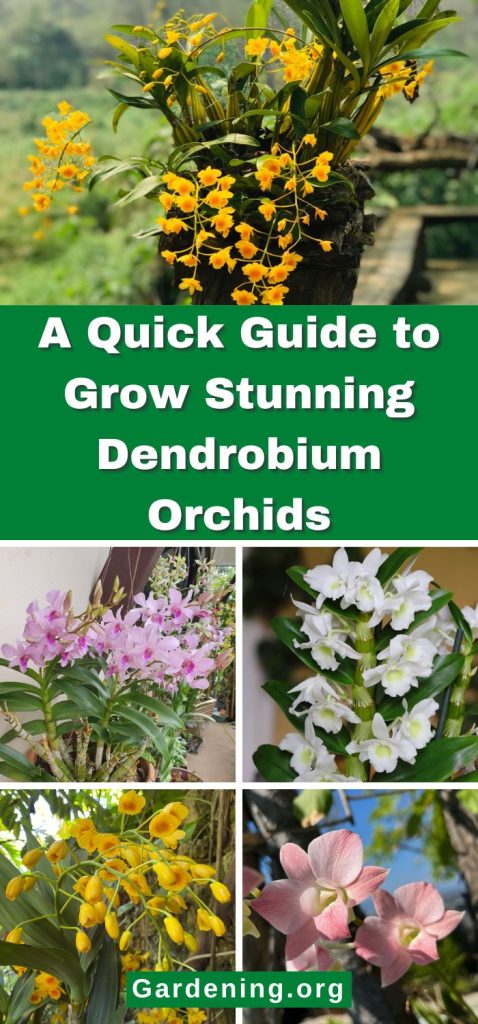

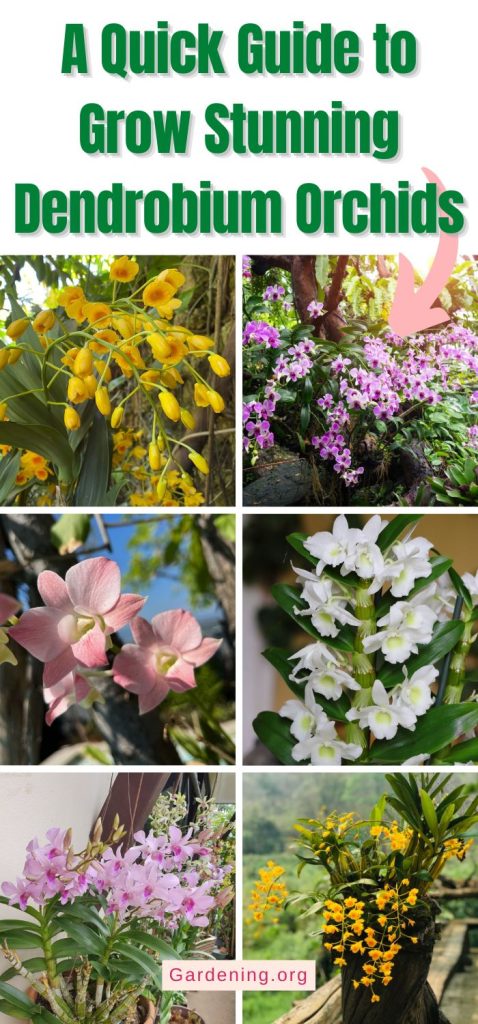
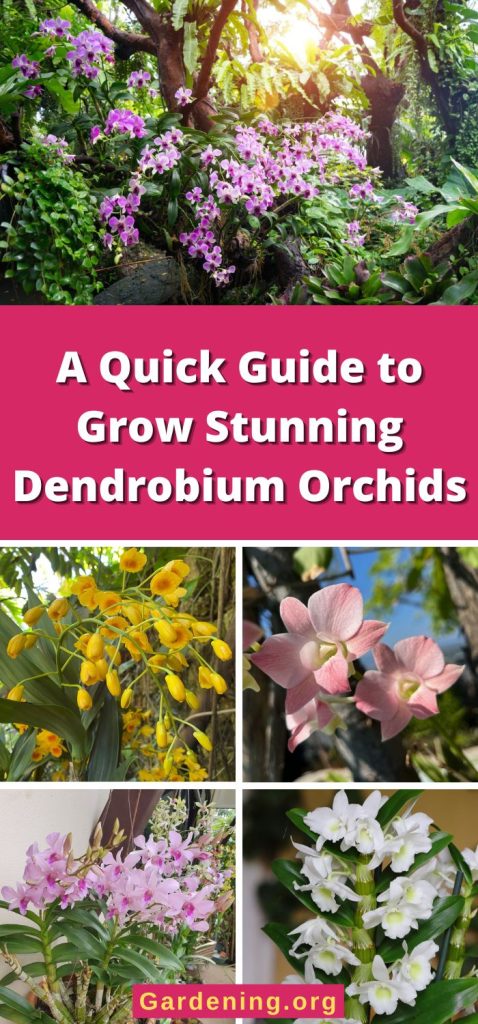
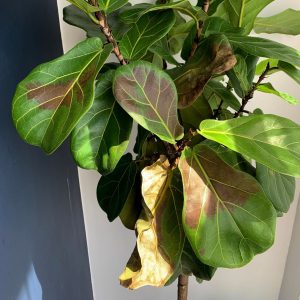
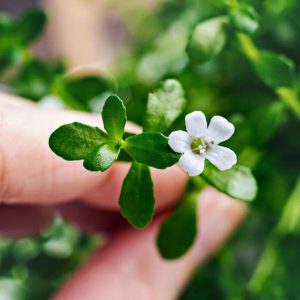
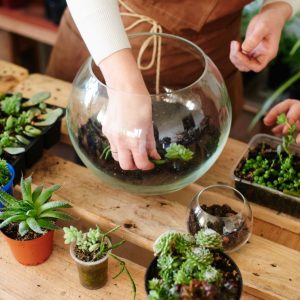
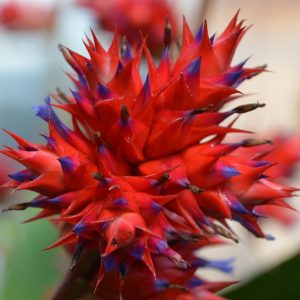
Leave a Reply